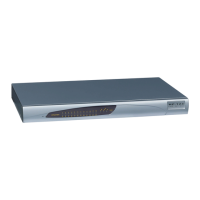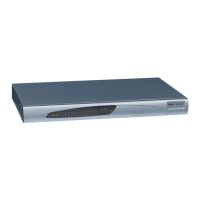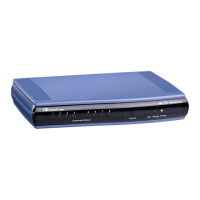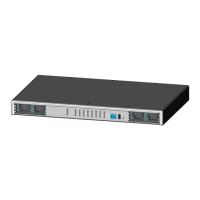Version 7.2 539 Mediant 1000B Gateway & E-SBC
User's Manual 26. Configuring Supplementary Services
Note: For FXS interfaces, the device can also handle call transfers using SIP INVITE
and re-
INVITE messages, instead of REFER messages. This is useful when
communicating with SIP UAs that do not support the receipt of REFER messages.
This feature is applicable to FXS interfaces. To enab
EnableCallTransferUsingReinvites parameter.
The device also supports attended (consultation) call transfer for BRI phones (user side)
connected to the device and using the Euro ISDN protocol. BRI call transfer is according to
ETSI TS 183 036, Section G.2 (Explicit Communication Transfer – ECT). Call transfer is
enabled using the EnableTransfer and EnableHoldtoISDN parameters.
To configure call transfer for connected BRI phones:
1. Open the Supplementary Services Settings page (Setup menu > Signaling & Media
tab > Gateway folder > DTMF & Supplementary > Supplementary Services Settings).
2. From the 'Enable Hold to ISDN' drop-down list (EnableHoldtoISDN), select Enable.
3. From the 'Enable Transfer' drop-down list (EnableTransfer), select Enable.
4. Click Apply.
The Explicit Call Transfer (ECT, according to ETS-300-367, 368, 369) supplementary
service is supported for BRI and PRI trunks. This service provides the served user who has
two calls to ask the network to connect these two calls together and release its connection
to both parties. The two calls can be incoming or outgoing calls. This service is similar to
NI-2 Two B-Channel Transfer (TBCT) Supplementary Service. The main difference is that
in ECT one of the calls must be in HELD state. The ECT standard defines two methods -
Implicit and Explicit. In implicit method, the two calls must be on the same trunk. BRI uses
the implicit mechanism. PRI uses the explicit mechanism.
26.5.2 Consultation Transfer for QSIG Path Replacement
The device can interwork consultation call transfer requests for ISDN QSIG-to-IP calls.
When the device receives a request for a consultation call transfer from the PBX, the
device sends a SIP REFER message with a Replaces header to the SIP UA to transfer it to
another SIP UA. Once the two SIP UA parties are successfully connected, the device
requests the PBX to disconnect the ISDN call, thereby freeing resources on the PBX.
For example, assume legacy PBX user "A" has two established calls connected through
the device – one with remote SIP UA "B" and the other with SIP UA "C". In this scenario,
user "A" initiates a consultation call transfer to connect "B" with "C". The device receives
the consultation call transfer request from the PBX and then connects "B" with "C", by
sending "B" a REFER message with a Replaces header (i.e., replace caller "A" with "C").
Upon receipt of a SIP NOTIFY 200 message in response to the REFER, the device sends
a Q.931 Disconnect messages to the PBX, notifying the PBX that it can disconnect the
ISDN calls (of user "A").
This feature is enabled by the QSIGPathReplacementMode parameter.
Note: The feature is applicable only to digital interfaces.

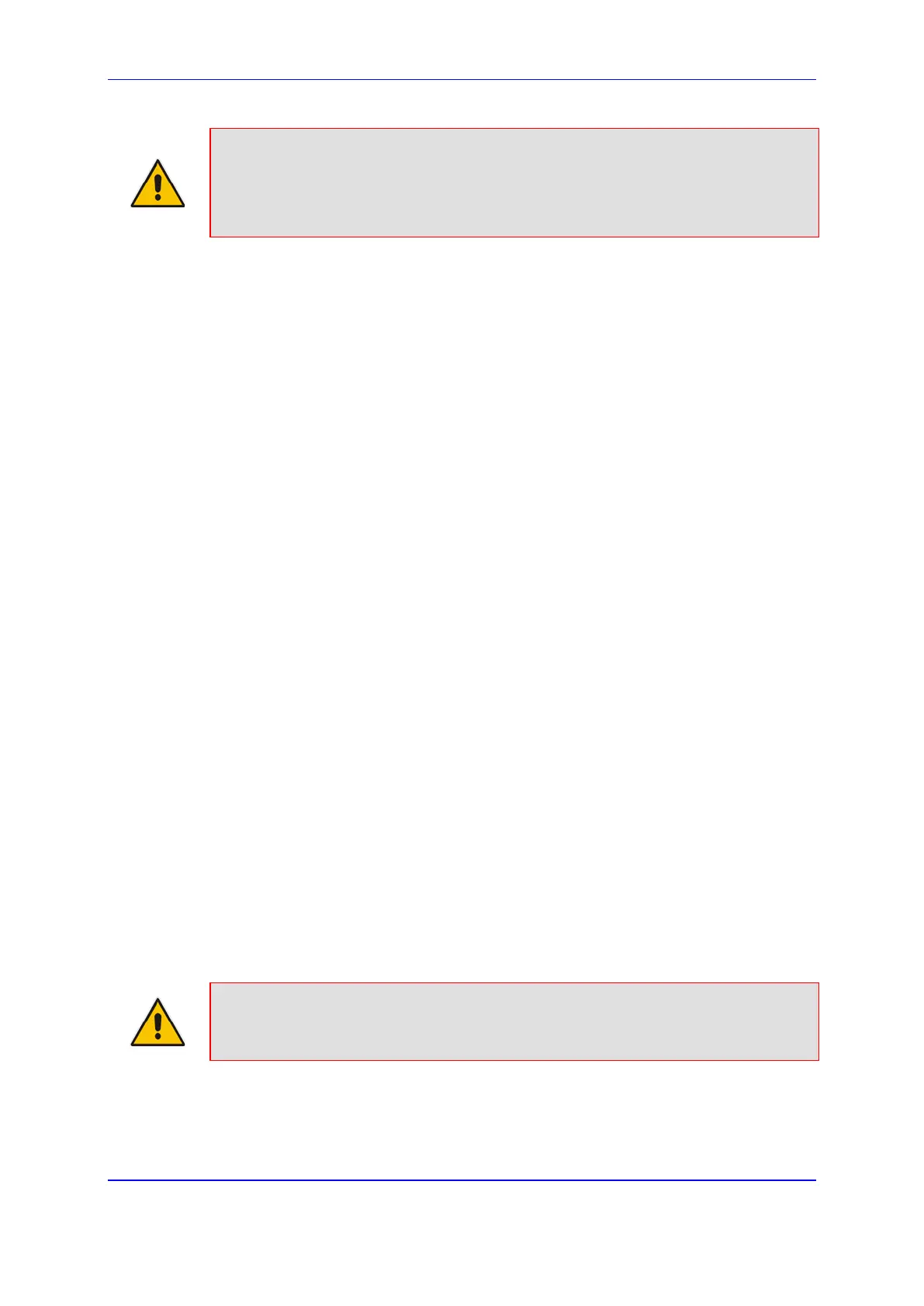